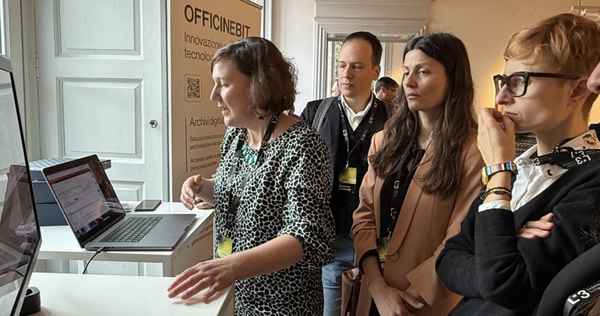Artchain is a platform that uses blockchain to create a decentralized, secure and transparent registry of artworks. Its main purpose is to support the creation and management of Online Reasoned Catalogs for visual artists, ensuring authoritativeness, protection and enhancement of artistic production.
The platform offers artists, collectors and gallerists a tool to certify and track the authenticity of artwork information, simplifying the buying and selling process and protecting against fraud. It combines technology and art to introduce a new approach to art heritage management and enhancement.
Artchain presents itself as a bridge between the traditional art world and decentralized systems, leveraging the features of blockchain-immutability, transparency and security-to certify the validity of artwork data and create a decentralized system of digital ownership.
In a context where traditional art relies on institutions and galleries to validate and sell works, Artchain enables artists and collectors to manage and exchange art securely, eliminating the need for intermediaries. Transactions on the platform are verifiable and transparent, simplifying copyright and royalty management, and offering effective protection against fraud.



Goals
Benefits
The blockchain is a powerful tool for ensuring the authenticity and transparency of the data that is recorded on it, but whether the data is correct depends on who is entering the data into it.
Verification through experts and curators
It is highly recommended to verify each piece of information by comparing historical documents in one's possession, the opinion of experts and, of course, (if still alive) the artist to validate its correctness before the work is recorded.
Creation of a digital archiving certificate
Each work registered on ArtChain would be accompanied by a digital certificate attesting to its archiving with the Foundation or Entity that manages an author's artistic legacy. This certificate could include photographs, videos, and other non-replicable information to aid in the certain identification of the work. In addition, the use of blockchain ensures that the certificate is immutable and publicly verifiable.
Smart contracts and traceability
Smart contracts can be used to set strict rules on the registration and transfer of works. These contracts could include conditions stating that the work must pass initial verification to be registered and sold.
Remarks
While the blockchain can ensure the immutability of data once it has been registered, it is critical that verification and validation of the data be done before registration on the infrastructure. The safest approach would be an integrated system of centralized verification (through experts or institutions) before the work can be “mined” on the blockchain. However, the security and reliability of the system is highly dependent on how the initial validation processes are designed and the credibility of the experts involved.
1. Certified information
Registration on the blockchain provides a digital archiviation certificate that ensures that the artwork purchased is original and not a replica or fraud. The blockchain acts as an unchangeable ledger that stores all information about creation, provenance, and ownership transitions, reducing the risk of purchasing counterfeit works.
2. Facilitated market access
Artists, by registering their works on ArtChain, could increase the visibility of their creations in a global marketplace. The blockchain allows them to be easily tracked by potential buyers and collectors, regardless of geography. This is a great advantage for emerging artists seeking to connect with a broader clientele.
3. Copyright and royalty protection
ArtChain could ensure a system for managing royalties for any future sale of the work. The artist could continue to receive a percentage each time the work is resold, thanks to transaction tracking on the blockchain.
4. Added value for galleries
Galleries and industry professionals who use ArtChain to register works could benefit from increased trust and credibility with collectors and buyers. Having digital and secure proof of the authenticity of a work's data could become a distinctive element in their offerings, making it easier to sell and exchange works.
5. Secure secondary market
The buying and selling of artworks on platforms that use ArtChain as a system for registering works could be safer, as each transaction is tracked and verifiable.
6. Investment possibilities
With ArtChain, art could be seen as a safe form of investment. Traceability of the provenance of works may make buyers more inclined to purchase works with a clear and well-documented history, thus increasing the value of the work over time.
7. Reduced verification costs
For gallerists, auction houses, and other art market players, ArtChain offers an opportunity to reduce verification costs and time. It is no longer necessary to rely on outside appraisers or experts to verify the artwork's identifying data, as all the information is already securely recorded on the blockchain.
8. Simplicity in international trade
ArtChain facilitates international trade in traditional works of art, as the blockchain enables the verification and transaction of works quickly and easily, eliminating the need for complex intermediaries, reducing costs and simplifying the bureaucratic process.
Contatti
info@officinebit.ch